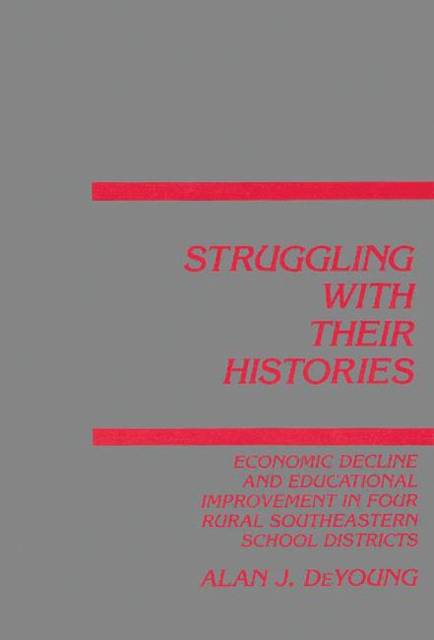
- Afhalen na 1 uur in een winkel met voorraad
- Gratis thuislevering in België vanaf € 30
- Ruim aanbod met 7 miljoen producten
- Afhalen na 1 uur in een winkel met voorraad
- Gratis thuislevering in België vanaf € 30
- Ruim aanbod met 7 miljoen producten
Zoeken
Struggling with Their Histories
Economic Decline and School Improvement in Four Rural Southeastern School Districts
Alan J DeYoung
€ 161,45
+ 322 punten
Omschrijving
This volume explores the social, economic and political histories of four primarily rural and poor school systems in the American Southeast. Part of the research upon which the book is based came from a three year evaluation of OERI sponsored schoolimprovement efforts undertaken by the Appalachia Educational Laboratory (AEL). AEL was interested in helping these districts improve their schools via a school-community partnership model. Some effort is expended in this book to discuss what did and did not work in each of the four contexts which attempted to use the model. The main focus of this volume is the social, economic and political stories behind contemporary efforts to improve schooling in these rural areas. Using a variety of qualitative, historical and statistical methods, the evolution of each community school system is reviewed as such historical developments continue to impinge on local school improvements. An underlying conviction of the author is that local histories and cultures importantly affect the types of school improvement interests, efforts and successes possible in American schools; a conviction that is well documented in this book.
Specificaties
Betrokkenen
- Auteur(s):
- Uitgeverij:
Inhoud
- Aantal bladzijden:
- 302
- Taal:
- Engels
- Reeks:
Eigenschappen
- Productcode (EAN):
- 9780893918170
- Verschijningsdatum:
- 1/01/1991
- Uitvoering:
- Hardcover
- Formaat:
- Genaaid
- Afmetingen:
- 156 mm x 234 mm
- Gewicht:
- 598 g

Alleen bij Standaard Boekhandel
+ 322 punten op je klantenkaart van Standaard Boekhandel
Beoordelingen
We publiceren alleen reviews die voldoen aan de voorwaarden voor reviews. Bekijk onze voorwaarden voor reviews.











